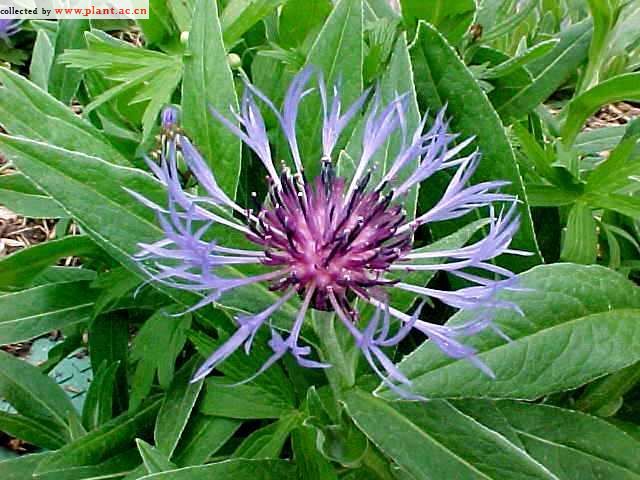Centaurea montanaMountain bluet
Family:Asteraceae
属:矢车菊属
common name:Mountain bluet
introduce:Plant Type: Herbaceous perennial
Family: Asteraceae
Missouri Native: No
Native Range: Mountains of Europe
Height: 1 to 2 feet
Spread: 1 to 1.5 feet
Bloom Time: May - June
Bloom Color: Blue
Sun: Full sun (only)
Water: Dry to medium moisture
Maintenance: Low
General Culture:
Easily grown in average, dry to medium wet, well-drained soils in full sun. Drought tolerant. Avoid rich, fertile soils. Can spread somewhat invasively by stolons to form colonies in optimum growing conditions (particularly in cool northern climates where it is more robust). Remove spent flower stalks to the ground after bloom. Sparse rebloom in late summer-early fall may occur. Plants need to be divided every 2-3 years.
Noteworthy Characteristics:
Centaurea montana is an erect, stoloniferous, clump-forming perennial which features solitary, fringed, rich blue cornflowers (2" diameter) with reddish blue centers and black-edged involucre bracts. Flowers appear in late spring atop unbranched stems typically growing 1-2 tall. Gray-green, lance-shaped lower leaves to 7" long. Commonly called mountain bluet, perennial cornflower or perennial bachelors button.
No serious insect or disease problems. Rust, aster yellows and stem rot are occasional problems.
Uses:
Best massed in border fronts, cottage gardens or naturalized areas.
